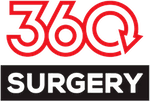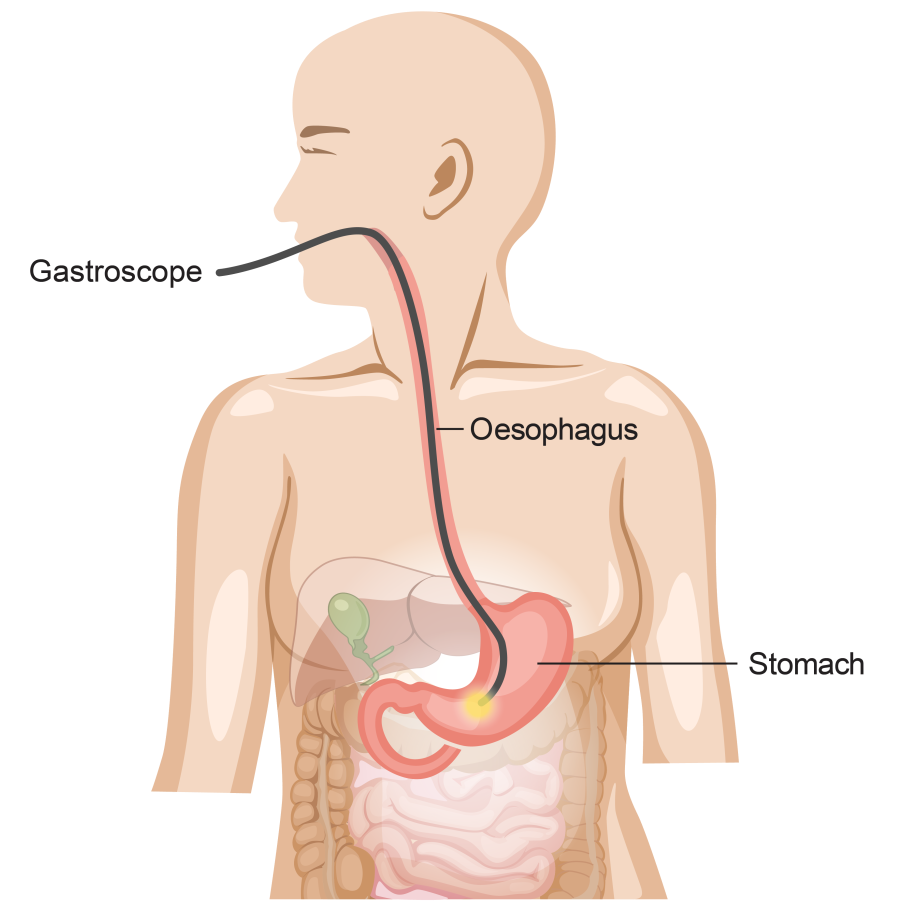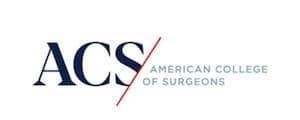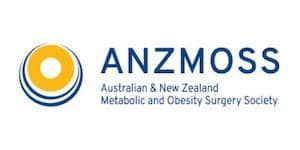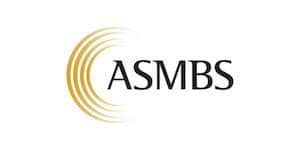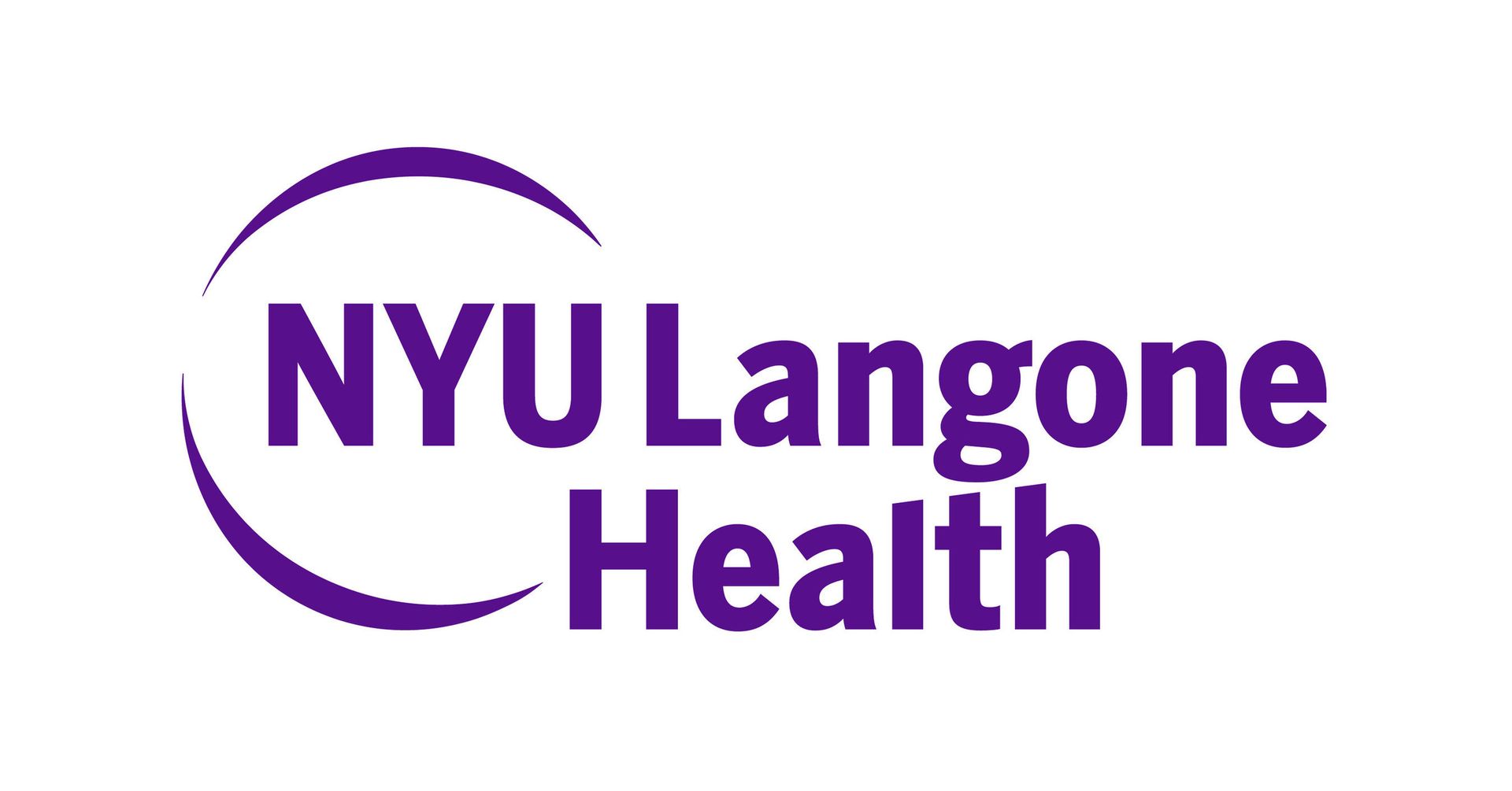Gallstones & Gallbladder Surgery
What is a Gastroscopy?
Gastroscopy (also known as upper gastrointestinal endoscopy) is a diagnostic procedure used to examine the inside of the upper digestive tract.
This procedure uses a flexible tube with a camera and light source at the end, enabling the doctor to view the digestive organs on a monitor.
This includes
- the oesophagus,
- stomach, and
- duodenum (the first part of the small intestine).
The gastroscope is put down from the mouth, oesophagus and stomach into the duodenum. The lining is visually examined, and small samples (biopsies) are taken for further tests.
A gastroscopy enables a diagnosis based on which specific treatment can be given. If a bleeding site is identified, treatment can stop the bleeding, or if a polyp is found, it can be removed without a major operation.
Other treatments can be given through the endoscope when necessary.
Who is Suitable for Gastroscopy?
Gastroscopy may be indicated in the evaluation of the following:
- Preoperative evaluation before bariatric surgery
- To evaluate complications of some bariatric procedures
- Abdominal pain or discomfort
- Difficulty swallowing,
- Gastroesophageal reflux disease
- Bleeding from the bowel
- Nausea or vomiting,
- Unexplained weight loss
- Family history of gastrointestinal disorders
Preparation Before Gastroscopy Procedure
- You will be asked to fast for a specified period before the procedure.
- You will be given sedation or anaesthesia to help them relax and minimise any discomfort.
- Your surgeon will explain the procedure's risks and benefits and answer any questions.
Medications Before the Procedure
You will be informed when to stop eating and drinking or take your usual medicine, depending on the time of day your procedure has been scheduled.
Most medicines can be taken, as usual. However, if you are unsure, please speak to your surgeon.
- Omit your diabetes tablets on the morning of the test. If you take insulin, you should take half your usual dose. The nurses will check your blood sugar when you arrive at the hospital.
- Anticoagulants (blood thinners), such as warfarin (Coumadin), apixaban, etc., must be stopped for 3 to 5 days. You must discuss this with your doctor as you may need injections during this period.
- Antiplatelet agents such as aspirin and clopidogrel (Plavix) must stop for one week. If you have stents in your heart, DO NOT stop the medicine without your cardiologist’s permission. If necessary, aspirin can be continued up to the day of the test.
- Most other drugs (for high blood pressure, cholesterol, depression, reflux, etc.) can be taken up to 2 hours before coming to the hospital with some water.
What Happens During a Gastroscopy?
- You will be positioned on your side or back with your head tilted forward. A mouthguard will be placed in your mouth to protect your teeth and the endoscope from damage.
- The doctor will then insert the endoscope through your mouth and throat. The endoscope allows the doctor to visualise the digestive organs on a monitor. The doctor will instruct you to swallow the endoscope as it passes down your throat.
- The doctor will examine the lining of your oesophagus, stomach, and duodenum using the endoscope. The camera on the endoscope will transmit images of the digestive organs to a monitor. The doctor will carefully inspect the organs for abnormalities like inflammation, ulcers, or tumours.
- If the doctor sees any suspicious areas, they may take tissue samples for laboratory testing. The doctor will use specialised tools passed through the endoscope to remove a small tissue sample. The tissue sample will be sent to a laboratory for analysis.
- Once the examination is complete, the doctor will carefully remove the endoscope from your mouth. The entire procedure usually takes between 15 to 30 minutes, depending on the findings and the need for tissue sampling.
What Happens After the Gastroscopy?
After the procedure, you will be taken to a recovery area, where you will be monitored until the sedative wears off.
You will be advised to refrain from driving or operating heavy machinery for the rest of the day.
After the procedure, you may experience mild discomfort, bloating, or sore throat, but these symptoms should resolve within a few hours.
You can go home the same day. You will need someone to pick you up from the hospital.
Gastroscopy Procedure Aftercare Instructions
Although gastroscopy is a relatively safe and quick procedure, following the appropriate aftercare instructions is essential to ensure a smooth recovery.
Rest and Hydration:
After the procedure, it is essential to rest for several hours until the sedatives or anaesthesia's effects have worn off. You should avoid driving or operating heavy machinery during this time.
Drink plenty of clear liquids, such as water, to help hydrate your body and prevent dehydration. Avoid drinking alcohol or caffeinated beverages, which can cause dehydration.
Diet
Your doctor will provide specific dietary instructions based on your individual needs. Generally, it is advisable to start with small amounts of clear liquids, such as water, apple juice, or broth, and gradually progress to more substantial foods as tolerated. Avoid spicy or fatty foods, which can irritate the digestive tract.
Medications
No medications are typically required after a gastroscopy. Follow your doctor's instructions carefully, and do not take over-the-counter medications without consulting your doctor first. Avoid taking non-steroidal anti-inflammatory drugs (NSAIDs) such as aspirin or ibuprofen, which can increase the risk of bleeding.
Physical Activity
Avoid strenuous physical activity, heavy lifting, or intense exercise for at least 24 hours after the procedure. Light activities like walking or gentle stretching are encouraged to help prevent blood clots and promote circulation.
Follow-Up Care
Your doctor will discuss the results of the procedure and any necessary follow-up care. Attending all scheduled appointments and following your doctor's instructions carefully is essential to ensure the best possible outcome.
Watch for Warning Signs
Although complications are rare, it is necessary to watch for warning signs that may indicate a problem after the procedure. These may include severe abdominal pain, difficulty breathing, chest pain, fever, or chills. If you experience any of these symptoms, seek medical attention immediately.
Risk and Complications of Gastroscopy
While gastroscopy is generally safe, there is a slight risk of complications, including bleeding, aspiration, and perforation of the upper gastrointestinal tract. You may also experience adverse reactions to sedation or anaesthesia. However, these risks are relatively rare and can be minimised by following your doctor's instructions before and after the procedure.
